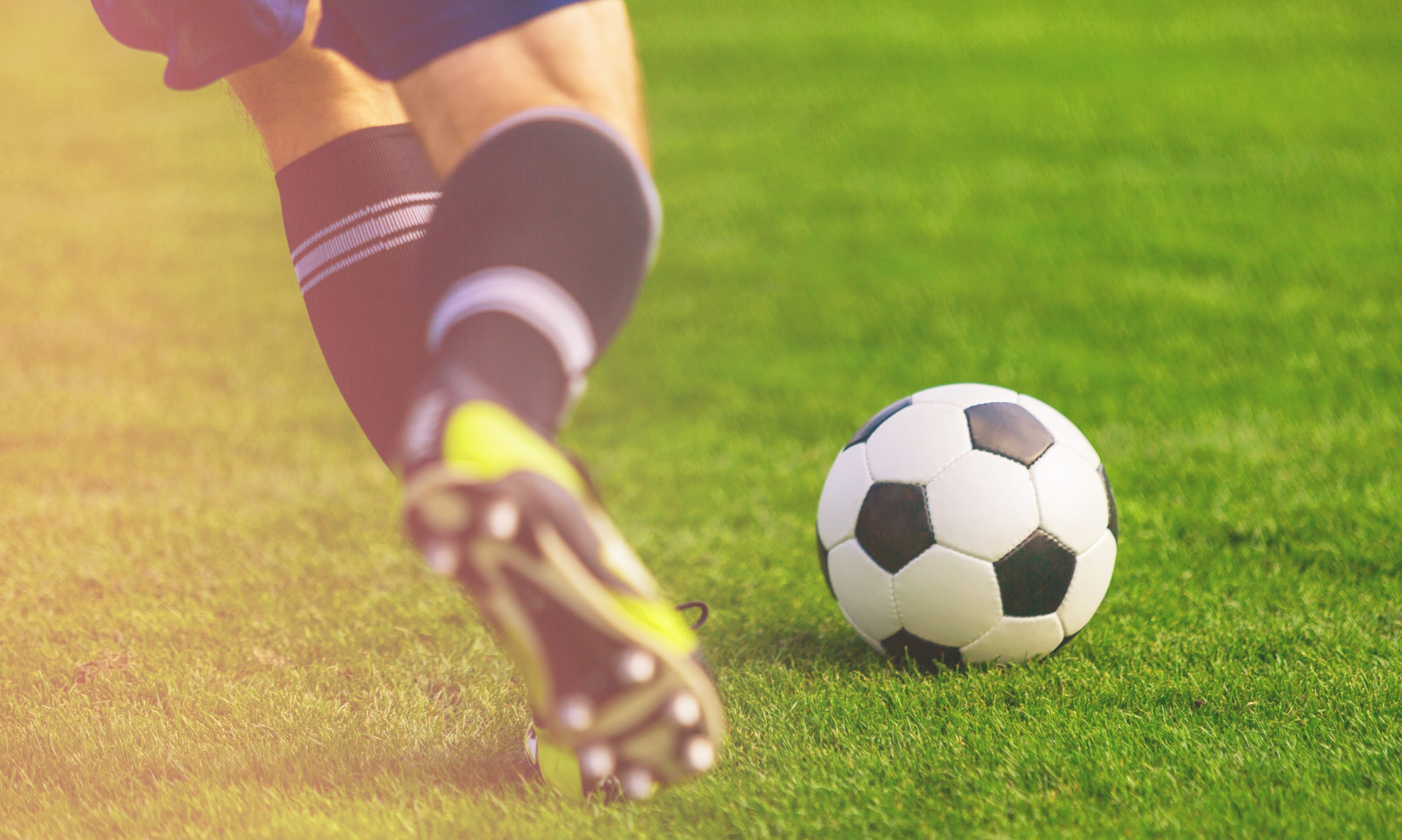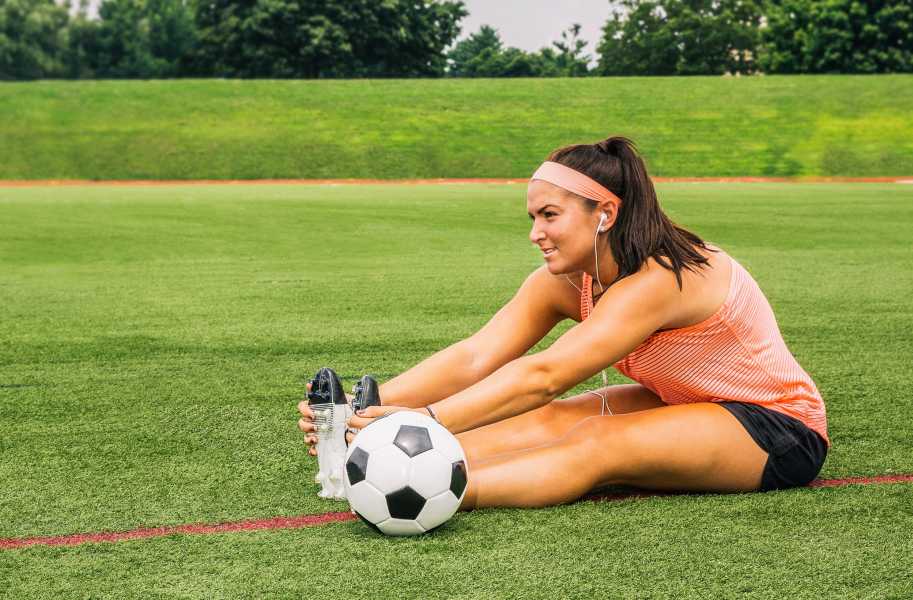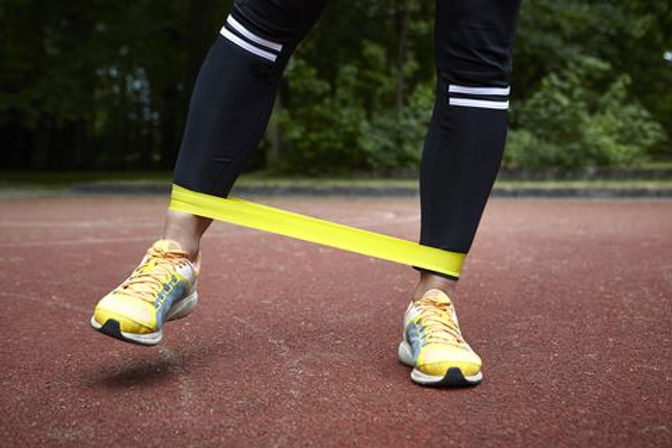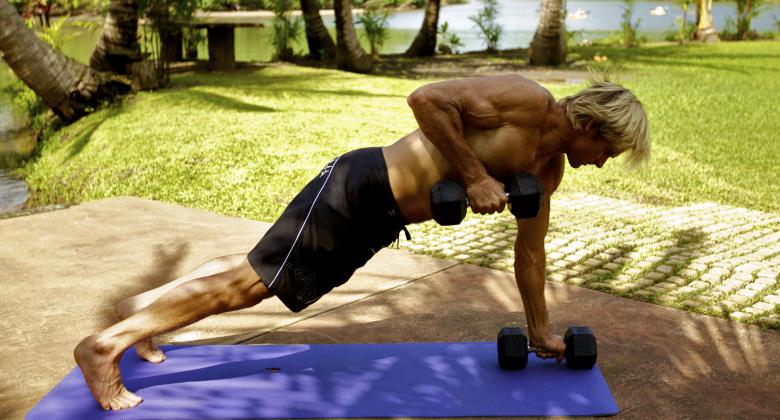Soccer players require a unique combination of strength, speed, endurance, and agility to perform at their best. The right exercises can significantly enhance these attributes, improving overall performance on the field. From plyometrics to core strengthening and flexibility training, this guide highlights the 15 best exercises for soccer players, aiming to boost their game by enhancing power, coordination, and resilience against injuries.

Contents [hide]
15 Best Exercises For Soccer Players
Strong lower body strength is crucial for various movements in soccer, such as running with the ball, tackling opponents, and taking shots at the goal. By focusing on these 15 best exercises that target your legs, you can increase your explosion speed, endurance, and overall ability during games.
1. Squats
Squats are one of the most dynamic lower body exercises that can greatly contribute to a soccer player’s performance. They target multiple muscle groups, including the quads, hamstrings, and glutes. By incorporating squats into your training regimen, you can develop stronger leg muscles, improve stability, and enhance your overall power on the field.
2. Lunges
Lunges are another excellent exercise for soccer players as they help strengthen the muscles in your legs and hips. They specifically target the quads, hamstrings, and glutes, providing stability and power during movements like running and changing directions. Incorporating lunges into your routine can improve your agility, balance, and overall lower body strength.

3. Deadlifts
Deadlifts are a powerful exercise that engages multiple muscle groups, including the hamstrings, glutes, and lower back. They are highly effective for strengthening the posterior chain, which is essential for explosive movements on the soccer field. By including deadlifts in your training, you can improve your speed, power, and overall performance as a soccer player.
4. Cone Drills
Cone drills are excellent for improving your agility, quickness, and change of direction on the field. Set up cones in a pattern and perform various movements around them, such as zig-zags, T-drills, or figure eights. By incorporating cone drills into your training, you can enhance your footwork and maneuverability during games.
5. Ladder Drills
Ladder drills are fantastic for improving your foot speed, coordination, and quickness. Using an agility ladder, perform various movements such as high knees, lateral hops, and quick steps. These drills simulate the fast-paced nature of soccer and can help you improve your overall speed and agility on the field.
6. Shuttle Runs
Shuttle runs are an excellent exercise for improving your speed, acceleration, and cardiovascular endurance. Set up two markers, such as cones or lines, and sprint back and forth between them. Incorporating shuttle runs into your training can enhance your ability to perform quick bursts of speed and recover faster during intense gameplay.
7. Running
Regular running is a fundamental component of soccer training. It helps improve your cardiovascular fitness, endurance, and overall stamina. Whether it’s long-distance runs or interval sprints, incorporating running into your routine will help you maintain your energy levels throughout the game.
8. Interval Training
Interval training involves alternating periods of high-intensity exercise with periods of rest or low-intensity exercise. It’s an effective way to improve your cardiovascular fitness, increase your speed, and boost your overall endurance as a soccer player. Incorporate intervals into your training by incorporating short sprints, high-intensity drills, or circuit training.

9. Plyometrics
Plyometric exercises involve explosive movements, such as jumping and bounding, to improve power and speed. They can enhance your overall athleticism, agility, and lower body strength. Incorporate exercises like box jumps, squat jumps, or lateral bounds to improve your explosiveness and overall performance on the soccer field.
10. Dynamic Stretching
Dynamic stretching involves moving your muscles and joints through a full range of motion, focusing on flexibility, and warming up your body before physical activity. It’s important for injury prevention and improving your overall mobility and performance on the field. Incorporate dynamic stretches like leg swings, walking lunges, or high knees into your warm-up routine.
11. Foam Rolling
Foam rolling is a self-massage technique that helps release muscle tension, increase blood flow, and improve flexibility. By incorporating foam rolling into your pre and post-training routine, you can enhance your recovery, reduce muscle soreness, and improve your overall performance as a soccer player.
12. Yoga
Yoga is an excellent way to improve your flexibility, balance, and body awareness. It can help prevent injuries, enhance recovery, and improve your overall performance on the soccer field. Incorporate yoga sessions into your training routine to improve your mobility, reduce muscle imbalances, and cultivate a calm and focused mindset during games.
13. Planks
Planks are a great exercise to strengthen your core muscles, including your abs, back, and hips. A strong core is essential for stability, balance, and overall power on the soccer field. Incorporate planks into your routine to improve your posture, prevent injuries, and enhance your overall performance.
14. Russian Twists
Russian twists target your core muscles, including your obliques and lower back. They help improve rotational power, stability, and overall body control. Incorporate Russian twists into your training routine to enhance your agility, balance, and ability to change direction quickly during games.
15. Single Leg Balance Exercises
Single leg balance exercises are excellent for improving stability, proprioception, and overall lower body strength. They mimic movements performed on the soccer field and help develop better balance and control. Incorporate exercises like single-leg squats or single-leg balance holds to improve your stability and prevent injuries.
Benefits of Exercise for Soccer Players
Here are some key benefits of exercise for soccer players:

- Improved Lower Body Strength: Soccer involves various movements that rely on strong lower body muscles. By incorporating exercises such as squats, lunges, and deadlifts into your training routine, you can strengthen your legs, hips, and glutes. This will not only enhance your power and explosiveness but also improve your agility and stability.
- Increased Speed and Agility: Sprinting and quick changes in direction are essential aspects of soccer. Interval training, cone drills, and ladder drills are excellent exercises that can enhance your speed, footwork, and agility. By incorporating these exercises into your routine, you can improve your ability to accelerate, decelerate, and change direction rapidly.
- Enhanced Endurance: Soccer matches can be physically demanding, requiring players to cover large distances at varying intensities. Regular running, both long-distance and interval training, can improve your cardiovascular endurance, allowing you to perform at a high level throughout the game.
- Better Flexibility and Balance: Flexibility and balance are crucial for soccer players to perform movements with precision and reduce the risk of injuries. Dynamic stretching, yoga, and single-leg balance exercises can improve your flexibility, range of motion, and proprioception, contributing to better overall performance on the field.
- Injury Prevention: Engaging in regular exercise can help prevent common soccer injuries. Plyometric exercises, foam rolling, and core strengthening exercises like planks and Russian twists can help improve your stability, reduce imbalances, and protect you from injuries.
Frequently Asked Questions
How can I improve my strength in soccer?
To improve your strength in soccer, you can incorporate exercises like deadlifts, box squats, banded lateral lunges, dumbbell presses, medicine ball squats/slam, and soccer ball/med ball planks. These exercises target the lower body and core muscles, helping to enhance your overall strength for better performance on the field.
How to increase your stamina?
To increase your stamina for soccer, you can follow these tips: exercise more frequently, reduce recovery time, take adequate rest, increase the intensity of your workouts, and add plyometrics to your training sessions. These strategies can gradually improve your endurance and allow you to maintain a high level of performance throughout the game.
How do you train like a professional soccer player?
To train like a professional soccer player, incorporate interval training into your routine 1-3 days per week. Additionally, dedicate 2-3 days per week to high volume lower body lifting, combining it with 2-3 days of upper body lifting. Finish off with some core training exercises to strengthen your abdominal muscles and improve overall performance.
Can I get better at soccer on my own?
Yes, you can improve your soccer skills on your own with consistent training, self-analysis, and the right mindset. While drills are helpful, it’s important to dedicate time to practice when you are alone. By putting in the effort and focusing on improvement, you can become a better player and enhance your soccer skills faster.

Hello, I’m Ravindra. Over the years, I’ve immersed myself deeply into the world of fitness and health, transforming both my body and mind. Writing has allowed me to share my journey, insights, and expertise with those just starting out and seasoned fitness enthusiasts alike. Beyond just routines and diets, I believe in inspiring others to adopt a holistic approach to well-being.
